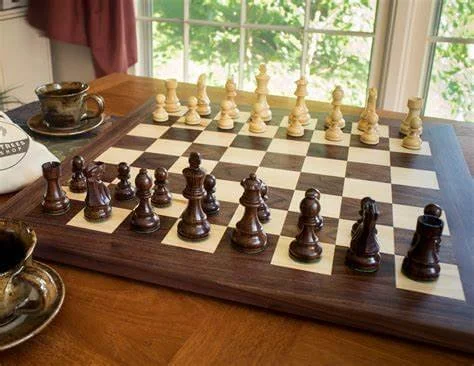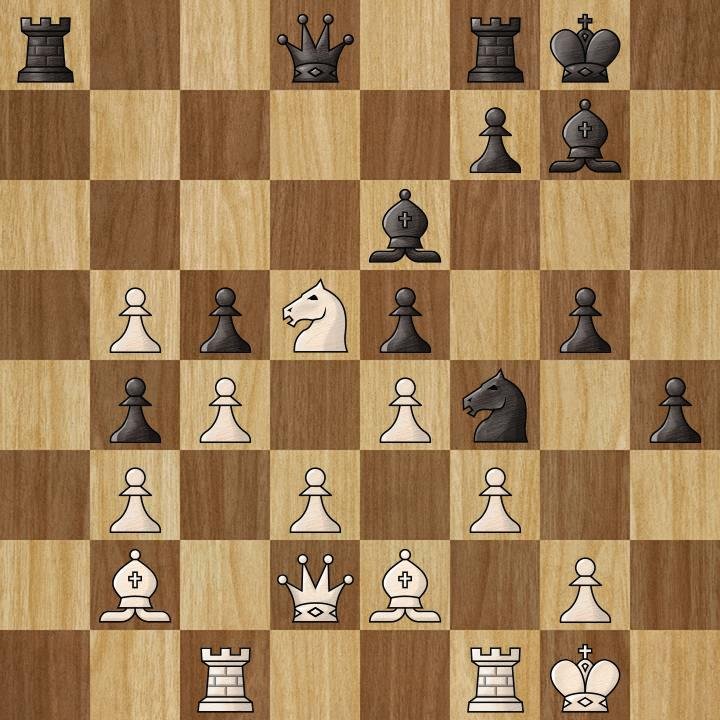Understanding the Basics of Pawn Structures
Pawn Structures: The Basics
For someone just starting out in chess, understanding how a pawn moves isn’t always the whole story.
Let’s take a look at the basic theories around pawn structures.
Ready to go!
Pawn structures are the backbone of any chess position.
It’s paramount to protect pawn chains if you want to get a winning position.
Let’s take a look at how the pawns work and then we’ll talk about how to create pawn structures that make sense.
How do the pawns move/capture?
Pawns move vertically one square at a time.
They can only move up the board, meaning for white they should always be moving up in numbers (2-3, 3-4, 4-5), and for black, they should always be moving down.
The only time a pawn can move more than one square is on its first move, where the pawn can move from the 2nd or 7th rank to the 4th or 5th rank respectively.
This wasn’t always a rule in chess, but it was used to speed up the game after players realised they were starting every game with two consecutive pawn moves.
Pawns capture diagonally. So, if a white pawn is on e4 and a black pawn is on d5, they can both capture each other.
On the other hand, if a white pawn is on e4 and a black pawn is on e5, those pawns will never capture each other and will remain in that position until a piece comes to a diagonal so that one can capture.
When a pawn reaches the other side of the board, it can be upgraded to any piece (although it’s usually a queen).
High-level chess players are always considering this fact because it is rare for players to give away any material at a high level.
Many grandmaster games have ended when one side is able to queen and the other is not.
Understanding basic pawn structures
When high-level players talk about pawn structures, this isn’t just referring to where the pawns are. Pawn structures determine how a game plays out at a high level.
Often, grandmasters will understand that having a certain pawn structure means having to accomplish a specific goal.
Controlling the Centre
The most obvious example of this is the Sicilian Defense, where black has one goal for his pawn structure: play d5.
It’s well understood by Grandmasters that if black is able to play d5 at any point in a Sicilian without giving up too much, the game will equalise, and black should fare well in an endgame with an extra central pawn.
Grandmasters like central pawns because of the control they exert over the position.
You can think of each piece on a chess board as having a zone of control. The queen has the largest because it can protect in all directions and as far as possible.
Each pawn exerts control over the two diagonal squares in front of it, while also theoretically controlling its own square from the opponent’s pawn on the same file.
What this means is that the more central the pawn, the more valuable the zone of control, since the two squares in front will control central squares, which are more valuable.
Pawns as Defenders and Supporters
Another important aspect of pawns is how they defend or support each other.
When two or more pawns are lined up diagonally so that they defend each other (in this position, a2 b3 c4 d5), this is called a pawn chain.
Pawn chains are an important part of chess because it’s how players are able to extend their pawns down the board without overextending their pieces.
In the example mentioned, if a piece has to defend the d5 pawn vs all the opponent’s pieces, that is much harder than defending the a2 pawn, for instance.
So the point is that white, in a position like that, would try to defend his strong central pawn, while black would either hope to attack it and isolate it with another pawn or go a different pawn in the pawn chain.
Often if the opponent has a large pawn chain, it’s good to play a flanking move with one of your pawns that will break up the chain.
In the pawn chain example we mentioned, that could mean playing a4 as black.
If black plays a4 and threatens white’s b3 pawn, white can either capture, making their pawn chain start on c4 now, or let black capture, moving the pawn chain to b3.
This will activate black’s rook and weaken the stronghold white has on the centre due to his protected central pawns.
The importance of passed pawns
Earlier, we talked a little about the importance of passed pawns and how important they are to high-level players.
A passed pawn is any pawn that will not have to contest an opponent’s pawn to reach the end of the board. In other words, it has passed all of the opponent's pawns and now just has to walk to reach the end of the board.
It’s often the case that a middle game will be played solely around passed pawns, with both sides pushing or perhaps one player sacrifices a piece to gain a protected passer on the 6th or 7th rank.
Protected passers are the most valuable pawns in chess.
A protected passer is a passed pawn that has another pawn still supporting it.
Take a look at this position.
Black has some strong pieces threatening white’s pieces, but the engine still says white should be better because of the protected passer on b5.
If black ever takes the knight on d5, then white will have two protected passers, which will make the position very difficult for black in any endgame.
Take a look at this next position. This is a well-known endgame puzzle, but it’s important for understanding pawn structure and why pawns are so important to chess.
It’s completely equal in material, but the computer says white should be winning, despite black’s more active king. Can you find the winning move here…
It’s g6! White is able to break through and create a passer, despite being in a worse position.
After hxg6, white plays another shocking move with f6!! sacrificing another pawn.
After black takes either pawn, white will create a passed pawn that will queen before black does and win an easy endgame.
How Pawn Structures Will Help Improve Your Game
If you want to have successful chess games, try to create pawn chains that will be difficult to break for the opponent or give you a lot of counterplay if they do.
The opponent doesn’t want to play a pawn move to break a pawn chain most of the time, as that will ruin their position too.
This can be used by players who are trying to increase their rating quickly through positional games.
I remember when I was first starting out, I would often win games because my opponent wouldn’t understand that they had to eventually contest a pawn chain.
Understanding pawn structures can be difficult at first, but it comes easily with a little practice on the chessboard.
Once you begin to understand how to use your pawns effectively, you’ll find the rest of your game starts to feel a lot easier.










